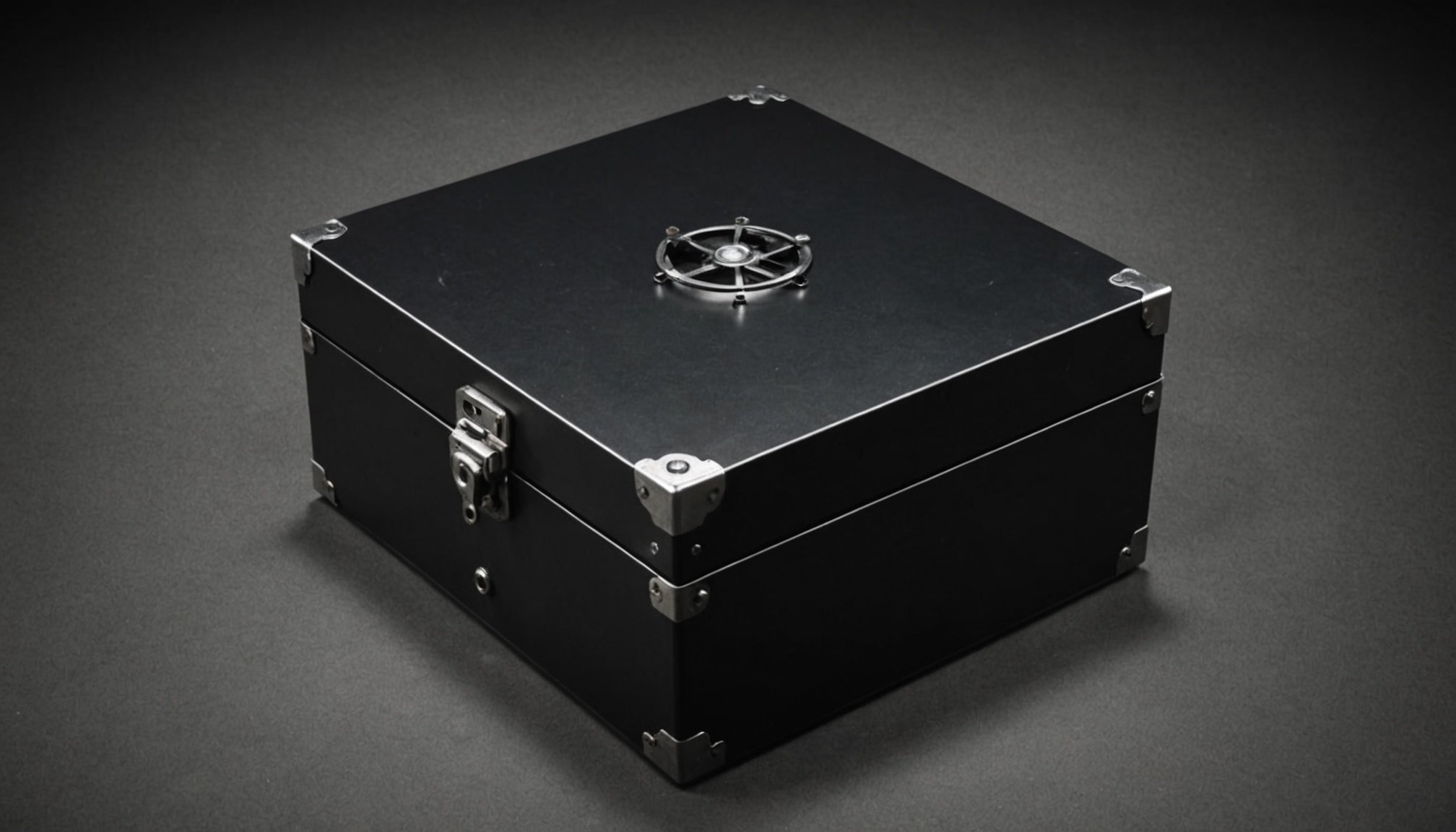Explore the thrilling secrets of the enigmatic black box

The black box, a seemingly simple device, holds the key to understanding aviation mysteries and ensuring flight safety. Its origin as a flight recorder evolved through groundbreaking technologies, enhancing its reliability and functionality. As we unravel the captivating journey of the black box, explore its role in investigating aviation disasters and its metaphorical significance in today's complex systems. Discover how this enigmatic device continues to shape our approach to safety and data analysis in various fields.
The Origins and Evolution of the Black Box
The black box, also known as the flight recorder, was first envisioned in the mid-20th century as aviation expanded rapidly. Its creation was closely tied to the need for understanding aviation accidents and ensuring future flight safety. The initial flight recorders were designed to capture critical data, including cockpit communications and flight parameters, aiding investigators in reconstructing events leading to crashes.
Also to discover : How Is AI Being Used to Optimize the Design of Wind Farm Layouts for Maximum Efficiency?
The origin of the black box history can be traced to the 1950s, with Australian scientist Dr. David Warren being credited for its invention. Driven by the lack of clarity in aviation mishaps, Warren developed a device capable of recording both audio from the cockpit and essential flight data. This dual capability became a cornerstone for aviation safety.
Advancements saw the introduction of robust, fire-resistant casings, and the incorporation of underwater locator beacons, making recovery feasible even under extreme conditions. Early challenges included integrating these systems into aircraft without interfering with performance while keeping costs manageable. Overcoming these hurdles, black box aviation eventually became a mandatory standard globally.
Also read : 12 vidéos inspirantes sur la marque employeur que vous devez voir
Today, modern recorders boast increased storage, real-time data transmission potential, and improved durability, demonstrating significant strides since their humble beginnings. Learn more at this exciting link.
How the Black Box Works and Its Role in Aviation
Understanding the black box functions sheds light on its critical role in aviation. A black box primarily consists of two key components: the Cockpit Voice Recorder (CVR) and the Flight Data Recorder (FDR). While the CVR captures audio from the cockpit, such as conversations and alarms, the FDR meticulously logs flight parameters, including altitude, speed, and engine performance.
To ensure precise data collection, the black box design incorporates highly sensitive sensors, which continuously monitor and store information. This data proves invaluable during accident investigations, where even milliseconds can offer significant insights.
What makes the black box unique is its extraordinary resilience. Built to endure catastrophic events, it undergoes rigorous testing to survive extreme conditions. This includes withstanding intense impact forces, high temperatures of over 1,000°C, and prolonged submersion under water. The bright orange casing, contrary to its name, helps researchers locate it more easily.
In the aftermath of an aviation incident, flight data recorder analysis plays a pivotal role. Investigators rely on this information to reconstruct the flight’s final moments. Insights gained from these investigations not only answer pressing questions but also contribute to improved safety measures, making air travel increasingly secure.
Famous Cases Where the Black Box Solved Mysteries
The black box crash investigation process has repeatedly unraveled the truth behind aviation disasters, often bringing critical improvements to safety protocols. One instance is the investigation of Air France Flight 447 in 2009. Initial search efforts were unsuccessful, but when the black boxes were finally recovered nearly two years later, they revealed pilot misjudgment and equipment malfunctions—key factors in the crash. This breakthrough led to advancements in pilot training and better cockpit automation systems.
In the tragic case of Malaysia Airlines Flight MH17, the black box breakthroughs helped confirm that the aircraft was struck by a surface-to-air missile. Such findings not only answered pressing questions but played a pivotal role in international investigations.
However, unresolved cases remind us of the black box's limitations. For example, the disappearance of Malaysia Airlines Flight MH370 remains a profound mystery despite extensive search efforts. The absence of black box data retrieval has left significant gaps in understanding what transpired.
Public perception of aviation safety is deeply shaped by these investigations. Each case reinforces the importance of black box crash investigation, ensuring lessons are learned and confidence in air travel is maintained. These small yet mighty tools continue to revolutionize aviation’s safety landscape.
The Metaphorical Use of "Black Box" in Modern Contexts
The "black box" metaphor has become an integral part of how people discuss complex systems, especially in technology and artificial intelligence. It describes systems where the internal workings are concealed, while focusing only on inputs and outputs. For instance, AI algorithms often function as a "black box," where decision-making processes remain hidden even to developers, highlighting how mystery analysis plays a crucial role in decoding intricate operations.
In literature and pop culture, the black box metaphor symbolizes enigma and intrigue. Books and films frequently use the imagery of a black box to represent hidden truths or undisclosed knowledge. These creative uses amplify the metaphor's impact, illustrating how mysteries can drive narratives or suspense.
Real-world applications of the black box metaphor extend beyond technology. In organizational research, the concept is employed to understand opaque leadership structures or unpredictable market behaviors. For example, mystery analysis has been critical to uncovering insights about hidden systems within multinational companies.
The Future of Black Box Technology in Aviation and Beyond
Modern advancements in advanced black box tech are setting the stage for groundbreaking changes in aviation safety. One of the most notable innovations is live transmission capabilities. Instead of solely relying on physical retrieval, next-gen flight recorders can stream critical data in real time. This could dramatically reduce investigation times, providing immediate insights into emergencies.
Beyond aviation, the black box concept is finding new applications across industries. For example, in automotive technology, black boxes are being utilized to improve vehicle safety by recording collision data. Similarly, in healthcare, similar devices are aiding in monitoring patient outcomes during surgeries, offering real-time feedback to medical teams. These multi-industry uses emphasize its versatility and game-changing potential.
However, challenges come with these advancements. Issues like data security, high costs of implementing live-streaming systems, and adapting to varying regulations pose significant hurdles. Yet, these challenges also bring opportunities for growth, especially in enhancing encryption technology and creating standardized global protocols.
By expanding the reach of mystery tech innovations, the long-term potential of black boxes extends far beyond their traditional roles, showcasing their capacity to transform safety, accountability, and efficiency in countless sectors.
